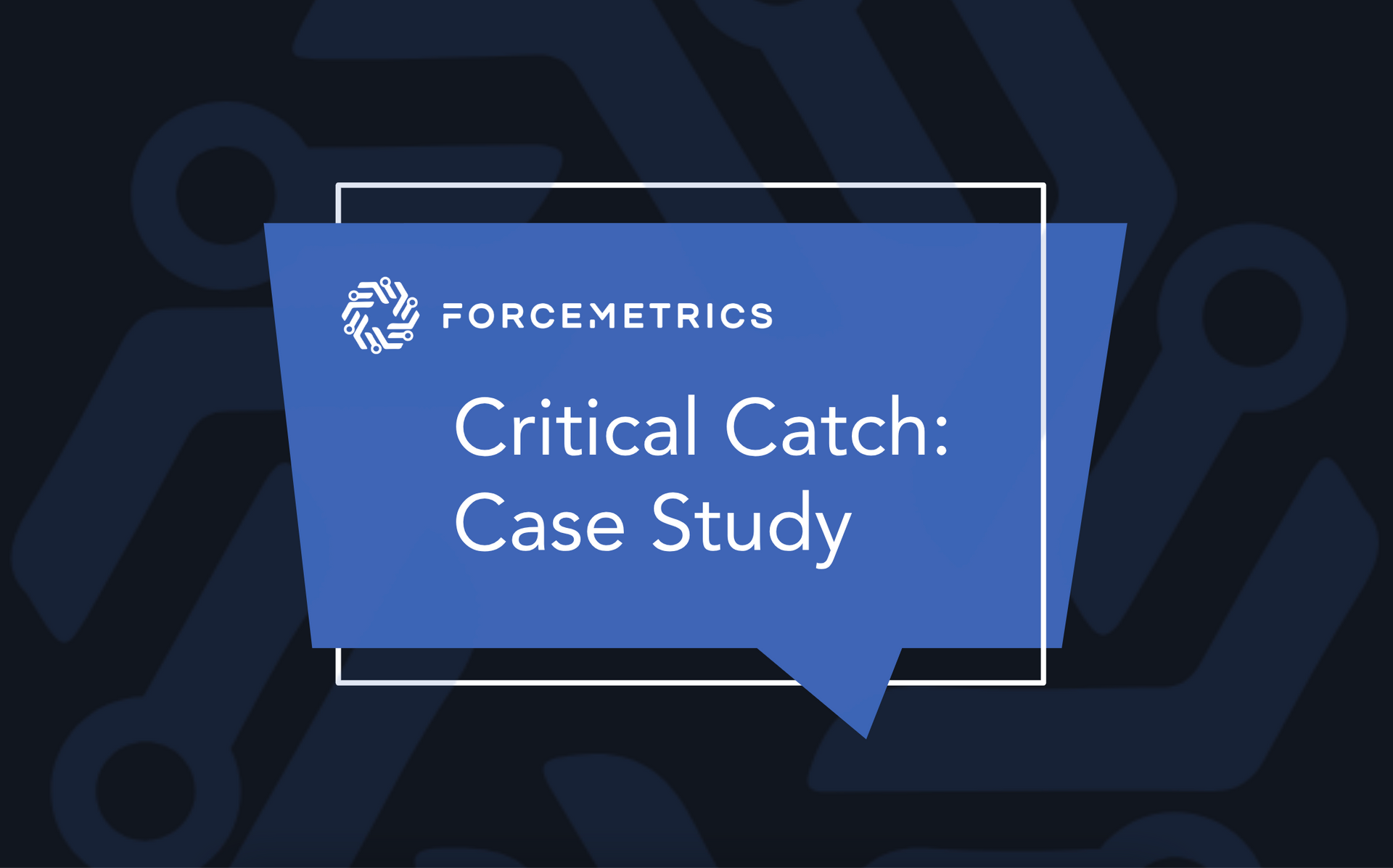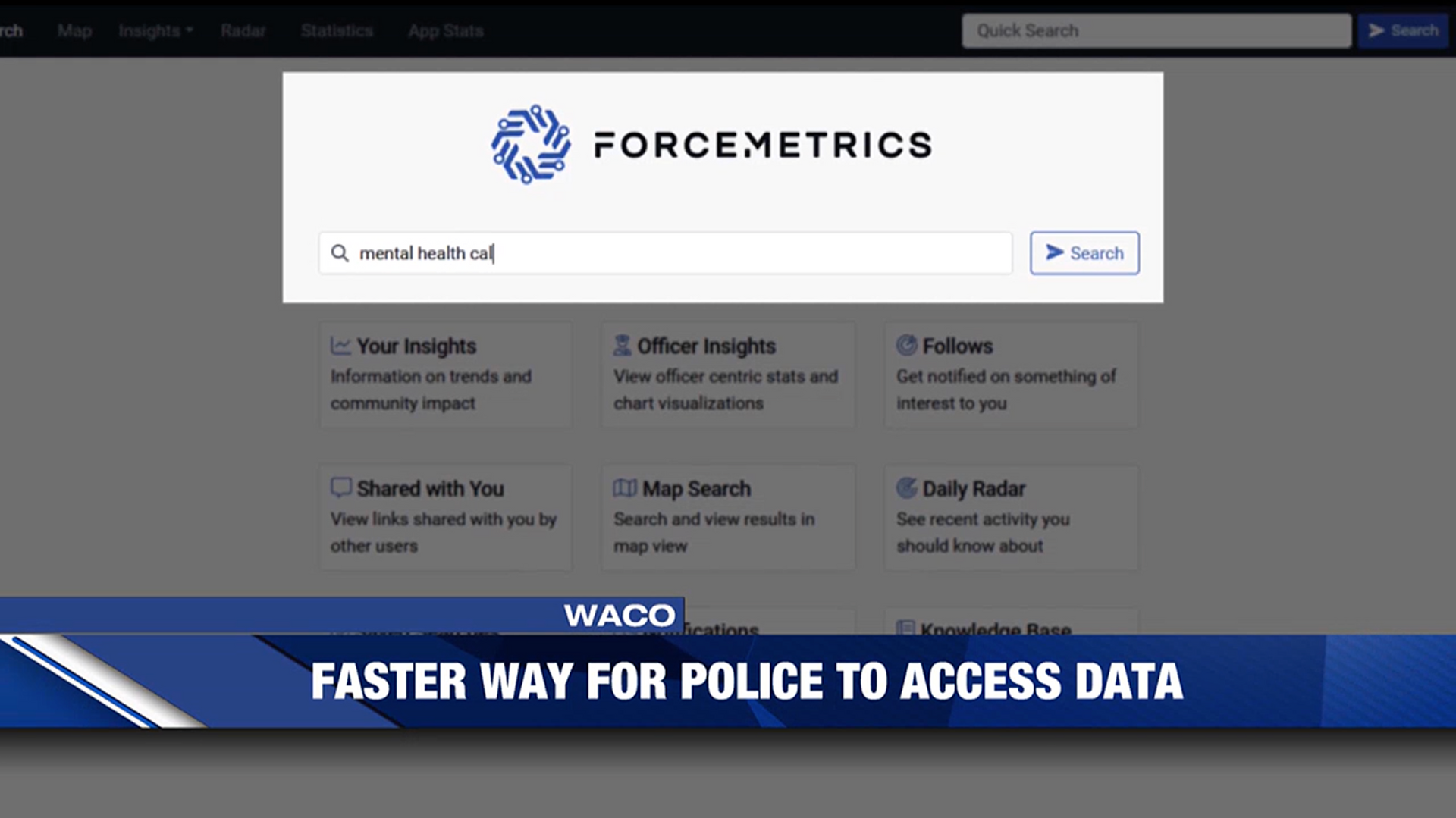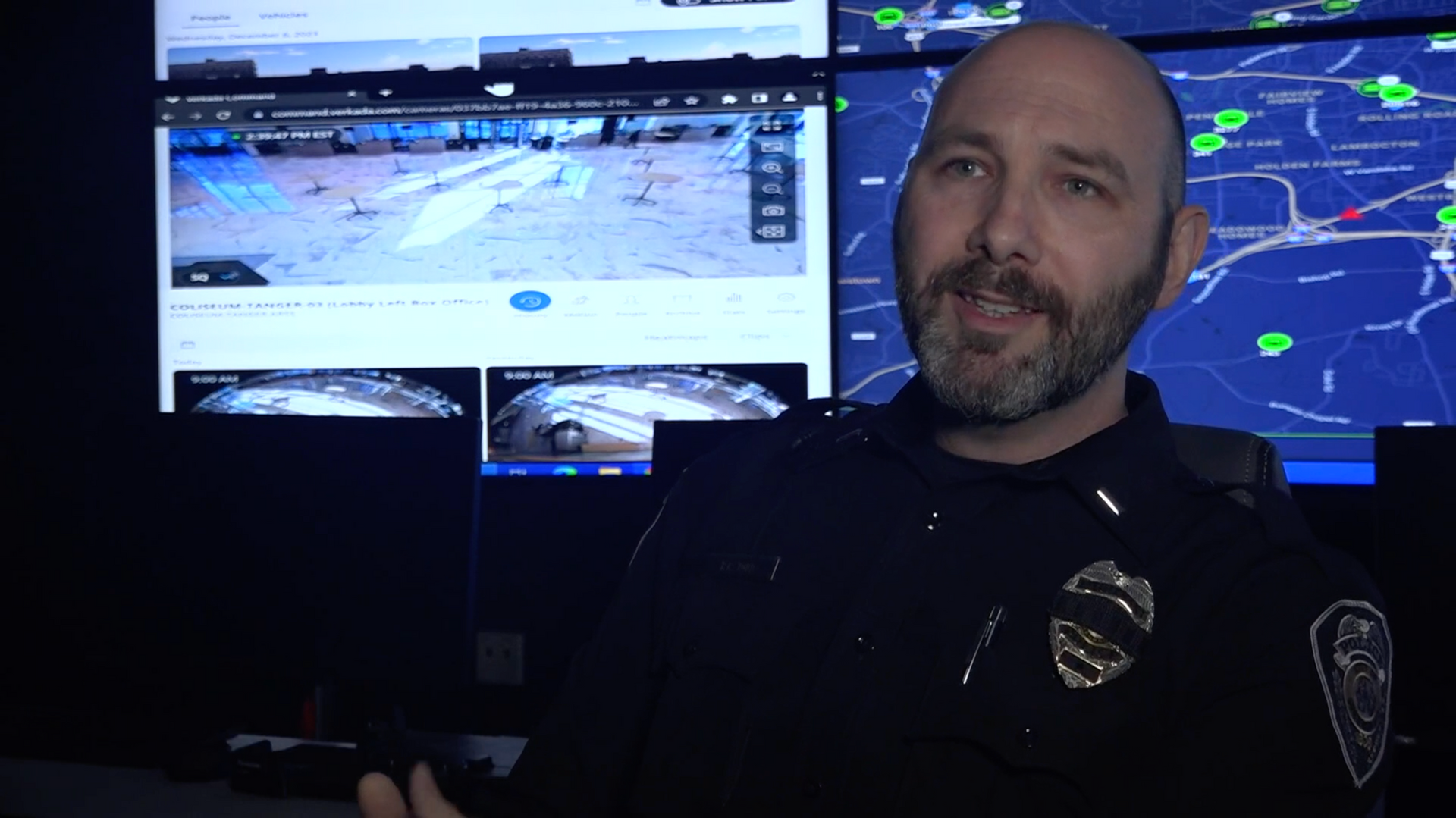Blog Layout
Police1: How Your Agency Can Increase Safety with Understanding
Apr 22, 2024
Police1 Feature | This powerful platform turns
your data into meaningful information
“Our focus is on presenting the essence of each situation quickly and clearly,
allowing officers to grasp the critical aspects without getting lost in the details."

Our world today is so overrun by “data” that it has become the buzzword of the century. But what is data anyway and what does it mean to law enforcement? When we think of data, we may find ourselves envisioning endless rows of information without any clear context. To bring meaning to it requires analysis, interpretation, and the luxury of time. And if there is any field that does not have the luxury of time, it’s law enforcement.
First responders, in particular, have the complete opposite of this luxury, making “data,” in effect, useless. When lives are on the line and the speed of response is critical, data just doesn’t play a role. What a responder does need, however, is an understanding of the situation they’re walking into. They need meaningful information delivered quickly and concisely for rapid situational awareness to enable the most informed decisions and the safest response for all parties involved.
Public safety systems today simply don’t facilitate this. With awareness and understanding unattainable, policing has become reactive for all team members, and the safety of all parties suffers.
FROM UNUSED DATA TO ACCESSIBLE INFORMATION
In every police department across the country, every second of the day, data is documented. The greatest intelligence report of a community is the collective of 911 calls, police reports and other community data that a department takes in. Yet with all of this data and all of the systems to collect and return it, somehow none of them talk to each other, they’re not quickly accessible and none of them make it meaningful.
Anyone in law enforcement can attest that the more information you have going into a situation, the better the outcome will be. This standard applies to everyday calls for service, high-profile investigations and even walking into the next CompStat meeting. So why is the information still so challenging to obtain?
As former law enforcement professionals who both saw and felt these challenges firsthand, the founders of ForceMetrics created a platform to address them. Capturing existing data across siloed, legacy systems, ForceMetrics brings together critical information in a way that provides an often-missing piece: context to make the data meaningful and actionable.
ForceMetrics isn’t aiming to be the most high-tech intelligence platform in the law enforcement industry. Instead, the company’s goal is to reduce complexity to increase rapid understanding – easing the burden of searching for information across multiple systems and the friction of combing through the lengthy reports and noncontextualized data typically returned.
MAKING YOUR INFORMATION MEANINGFUL
ForceMetrics combines existing data from police reports, 911 call notes, jail data and more into one easily searchable location where you can follow your hunches and achieve rapid situational awareness.
“Our focus is on presenting the essence of each situation quickly and clearly, allowing officers to grasp the critical aspects without getting lost in the details. We highlight key insights and safety factors, making it easy to skim through the data and understand the root of a situation,” explained Andre McGregor, ForceMetrics founder and CEO.
With every search, users can further narrow down information, adding keywords, time frames, types of events and more. ForceMetrics helps users digest results quickly through its combination of automatic call classification, report summarization and safety signal features. A mapping feature also aids in visualizing patterns and enhancing the understanding of area-specific trends.
Beyond meaningful, actionable information, officers can also expect these specific outcomes using ForceMetrics:
1. Simplicity and ease of use – ForceMetrics users are greeted with a single search bar that’s as easy to use as any internet search engine. Your search doesn’t have to be exact either, as ForceMetrics can find results with misspellings, partial addresses, license plates or phone numbers, keywords, social media handles, location radiuses and more.
2. Shared understanding – ForceMetrics is designed for more than just first responders, as information can be shared with others within an agency and beyond. All team members involved in public safety can access a clear snapshot of important information, ensuring everyone from investigators to district attorneys is on the same page. Community stakeholders can also be looped in to help foster partnerships and implement diversion programs based on measurable information.
3. Increased safety – The more information an officer has before entering a situation, the better. Patterns related to specific individuals, like weapons possession or mental health concerns, can be easily identified through ForceMetrics’ safety signal system, giving officers insight into how they can identify risks and ensure their own safety and that of others. Quick access to this information can help reduce time on scene and ensures officers are fully informed before responding to a call.
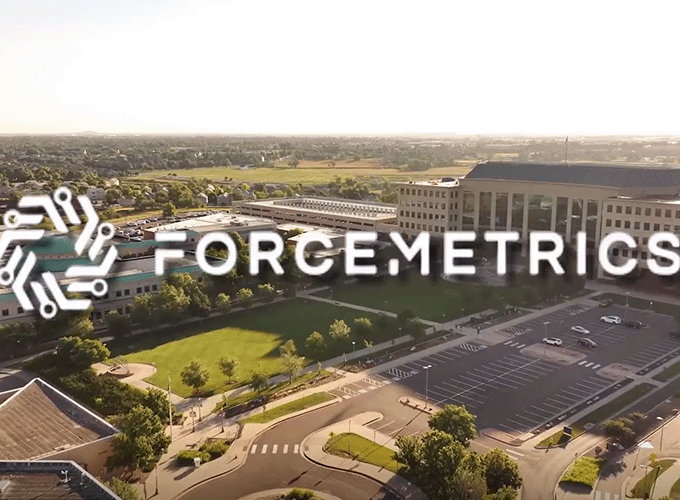
10 Apr, 2024
Aurora911 was the first city department to launch ForceMetrics with its entire staff. Emergency communications specialists can search and access vital safety, mental health and historical information in seconds rather than hours, improving the accuracy and appropriateness of resource deployment.
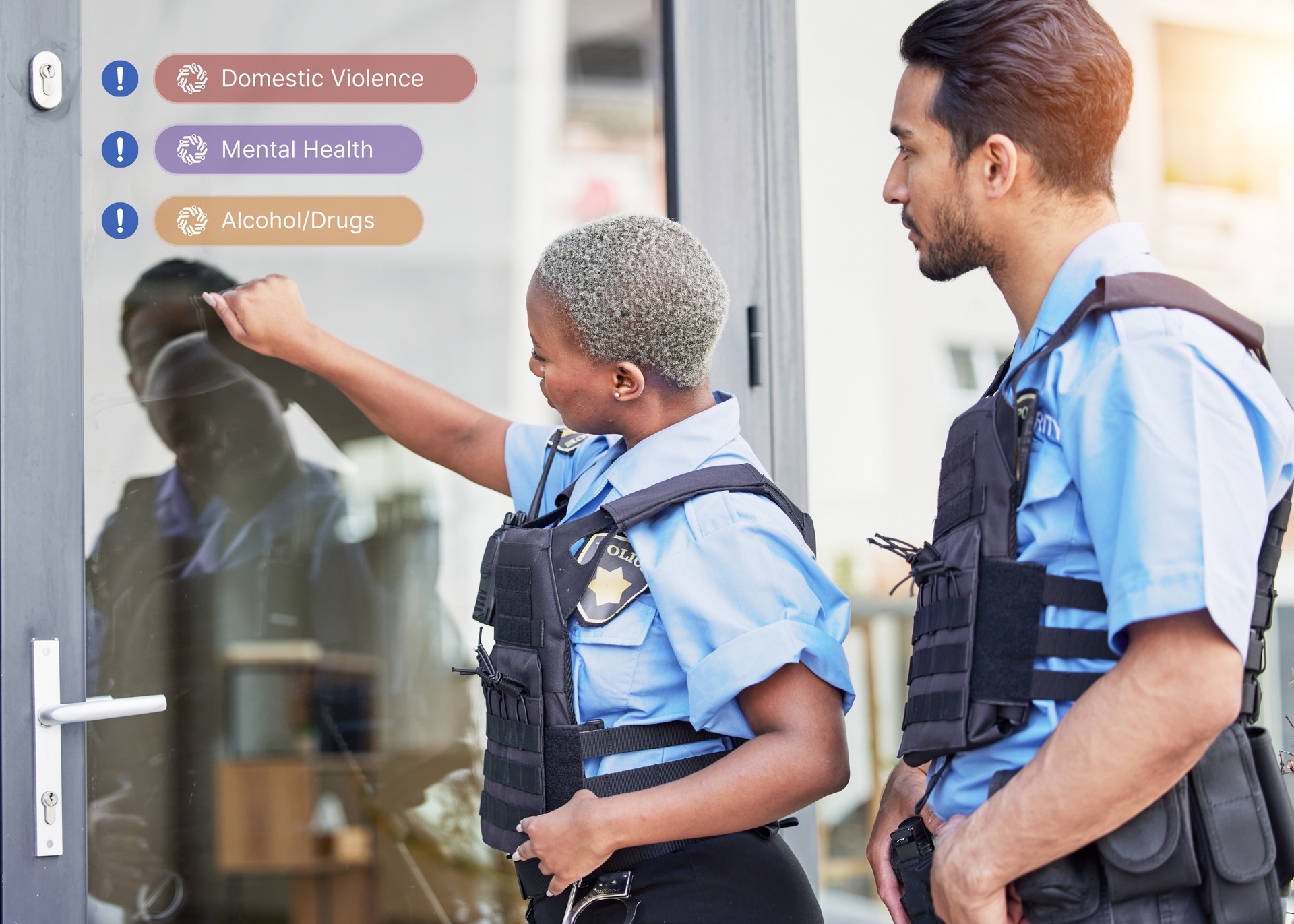
14 Mar, 2024
Imagine responding to a call with not just the information provided by dispatch, but a comprehensive, easy-to-understand overview of the situation at hand, including the people and places involved, key history, and important social needs and safety risks to be mindful of going in. At ForceMetrics, this is where we focus our efforts to help responders succeed.

18 Jan, 2024
One of many areas where technology is making a significant impact is in the identification of vehicles, providing law enforcement with powerful tools to streamline investigations, enhance public safety, and combat criminal activities. Here we'll explore the innovative ways technology is being used to identify vehicles in policing.

By Jason Truppi
•
21 Dec, 2023
In the dynamic landscape of law enforcement, the concept of stratified policing has emerged as a nuanced approach to addressing the diverse challenges faced in crime prevention and public safety. This evolving strategy recognizes the importance of tailoring policing efforts to specific layers, or strata, taking into account varying levels of crime, time and risk factors, departmental roles, and unique community needs and patterns. Yet the critical factor to a successful stratified policing approach is having the data available to properly assess and distinguish between these characteristics in the first place. Departments need clear, accurate, and contextual data to understand crime patterns and trends and truly put this evidence based policing strategy to meaningful work. Unpacking the Layers At its core, stratified policing involves the careful examination and classification of crime trends and community challenges based on set criteria. This approach recognizes that a one-size-fits-all strategy may not be effective in addressing the complex and multifaceted nature of crime. Instead, law enforcement agencies employing stratified policing seek to understand the unique characteristics of different strata and implement appropriately tailored solutions. The layers in stratified policing are often broken into immediate, short-term, and long-term problems. Immediate problems are generally recognized as isolated calls and incidents, though with varying degrees of significance, taking anywhere from minutes to months to resolve. Short-term problems are those that occur over days or weeks and are either repeat incidents or recognizable crime patterns, such as a series of similar crimes or crimes committed within a hotspot. Long-term problems or priorities exist over months or years, and frequently arise from opportunities created by everyday environmental or behavioral factors. Risk Assessment One key element of stratified policing is the strategic identification and prioritization of areas of focus based on their level of crime or risk factors. By allocating resources more intensively to high-crime areas, for example, law enforcement agents can maximize their impact and create a more targeted response to identified challenges. Community Engagement Building trust and fostering partnerships within the community are integral components of successful stratified policing. Recognizing that different communities have unique needs and concerns, law enforcement agencies actively engage with residents to understand and address their specific issues. This collaborative approach helps to bridge the gap between law enforcement and the community, creating a more effective and responsive policing environment and bolstering public safety in turn. Data-Driven Approaches In our modern world ruled by information and technology, data plays perhaps the single most critical role in shaping effective evidence based policing strategies. Successful stratified policing leverages data and analytics to gain insights into crime patterns and trends within different areas or layers of a community. This information empowers law enforcement to make informed decisions, strategically allocate resources, optimize workflows and performance, and implement targeted interventions where they are needed most. Problem-Oriented Policing Stratified policing goes beyond surface-level crime prevention by addressing the root causes of issues within a community. This problem-oriented approach necessitates effective collaboration with other community agencies and organizations to tackle underlying factors contributing to crime. By addressing these issues head-on, and facilitating open communication and information sharing among community stakeholders, law enforcement agents can create lasting solutions and improve overall community well-being. Conclusion: A Tailored Approach for Safer Communities As law enforcement continues to evolve, the concept of stratified policing stands out as a promising strategy for creating safer and more resilient communities. By recognizing and responding to the unique challenges and needs of our communities with tailored, data-driven approaches, law enforcement agencies can make a lasting, meaningful impact – reducing crime, building trust, fostering collaboration, and ultimately creating a safer environment for all. As this approach continues to develop, it will be essential to stay informed on emerging best practices and adapt strategies to meet the ever-changing needs of our diverse communities. ForceMetrics is actively enabling agencies to leverage clear, contextual data in the implementation of more accurate and successful stratified policing programs. Connect with us to learn how we can help your agency navigate the layers.

